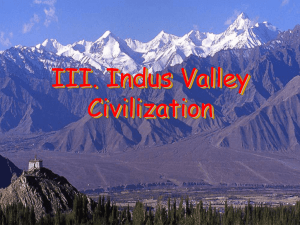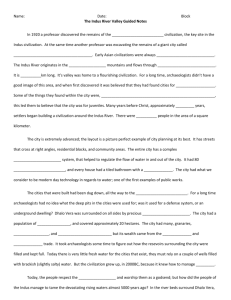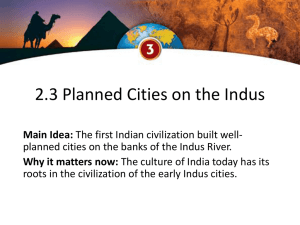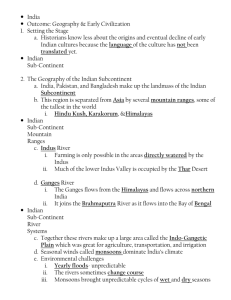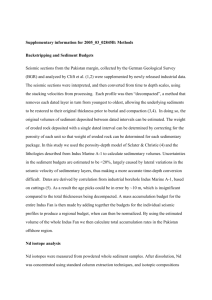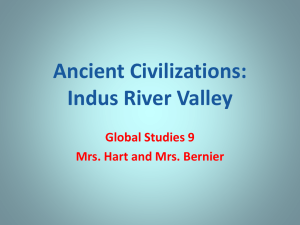PLANNED CITIES ON THE INDUS
advertisement
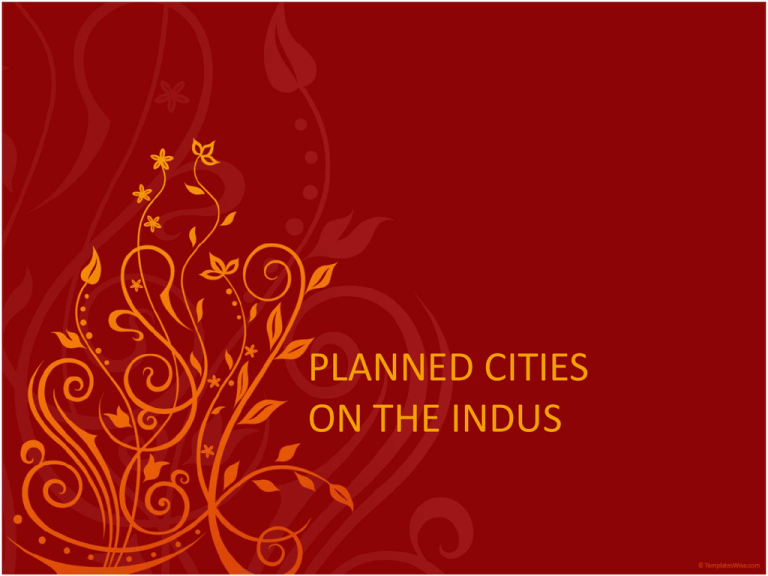
PLANNED CITIES ON THE INDUS Map Mountains • Subcontinent-3 mountain ranges (Hindu Kush, Karakoram, and Himalaya) separate Indus River Valley from the rest of Asia • Mountains created natural barrier and helped protect the Indus Valley from invasions Rivers and Monsoons • River-Yearly floods deposit silt, BUT the floods were very unpredictable and the river sometimes changed it course • Monsoons-seasonal winds that bring heavy rains in the spring, watered crops and caused flooding Mysterious Civilization • Historians have not yet deciphered the Indus system of writing • Very little is known, except from discoveries from archaeological digs Indus River Valley • Located in modern day Pakistan • Area much larger than Mesopotamia or Egypt • Developed trade with distant people, including the Mesopotamians • Few weapons have been found, suggesting that it was a peaceful society • Artifacts such as clay and wooden kids toys suggest a prosperous society Indus Trade Routes Planned Cities • Archaeologists have found ruins of more than 100 sophisticated cities along the Indus • Laid out their cities on a precise grid system • Very-large scale building, walled cites, with fortified citadels • Separate residential (houses) districts, uniform housing suggests that social divisions were not great • Buildings were made from oven baked bricks • Very sophisticated plumbing and sewage systems • Suggests that Indus people had developed a strong central government Connections to Indian culture • Religious artifacts reveal links to modern Hindu (Indian religion) culture • Figures show early representations of Shiva, a major Indian god • Other figures relate to a mother goddess and fertility • Some figures suggest the worship of cattle • ALL OF THESE BECAME PART OF LATER INDIAN CULTURE Mysterious End • Neared its end around 1500 BCE • What happened? THEORIES – Indus River changed course and no longer fertilized fields near the cities – People wore out the valley’s land from overgrazing, overfarming, overcutting – A sudden catastrophe or natural disater – Attack from human enemies, probably a nomadic tribe Mohenjo-daro view of the “Citadel” The “Great Bath” another view of the “Great Bath” view of a small, side street looks like a small tower, but actually it is a neighborhood well A bathroom on a private residence A public well in Harappa, or perhaps an ancient laundromat... A large drain or sewer Harappan grain store house

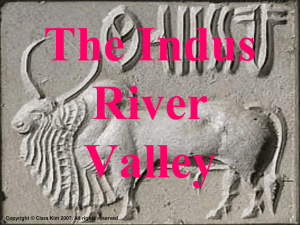

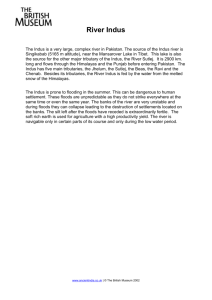

![Indus[1] - ridgeaphistory](http://s3.studylib.net/store/data/006736077_1-c59280ecd30594bac8ab21ec7bce4db4-300x300.png)
